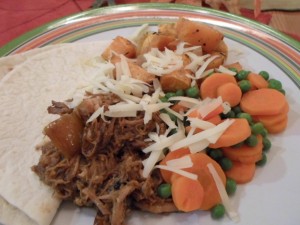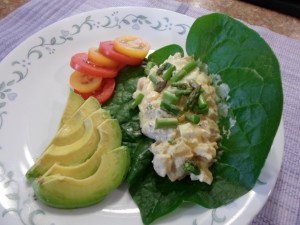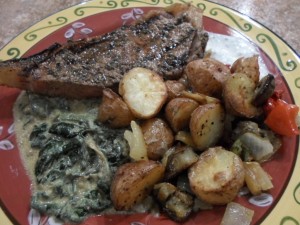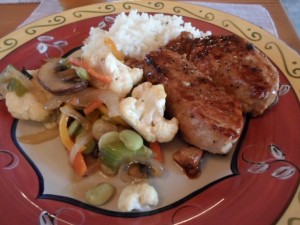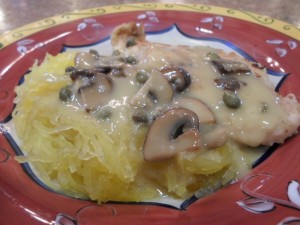There’s nothing like the smell of something cooking low and slow when you come in after working hard outside. I cooked a pork shoulder roast in the crock pot. The roast was one of those with the store’s fluorescent tag reading, “Cook or freeze by…” and the current day’s date. Although I found that a little disconcerting, I just can’t pass up a good deal. I also figured that cooking it all day would take care of anything questionable the sticker might suggest.
The roast was almost 4 lbs. and could provide a few meals, so I seasoned it knowing the leftovers would be used in spicy burritos or pulled-pork sandwiches. I started with a layer of chopped onions and about 6 garlic cloves in the bottom of the pot. Then I coated the roast with a seasoning rub. I use the same rub for any beef or pork roast.
Roast Seasoning Rub
1 Tbsp. sea salt
1 tsp. cracked black pepper
1/2 Tbsp. each of thyme, oregano, chili powder and celery seeds
Mix the seasonings together, rub over the entire roast and set it on top of the vegetables. I usually add a small amount of liquid, so I diluted about a Tbsp. of barbecue sauce in 1/3 cup water and drizzled on top of the roast. Worcestershire sauce or broth would also work. Then cover and set on low for 8 hours.
The cook time tends to vary with different crock pots. I own two and find their cook time variance is up to 2 hours. However, I know the roast is done when it falls easily from the bone or is easily separated with a fork. Then, let the roast rest for 15-20 minutes.
I served it with oven-roasted sweet potatoes, peas and carrots garnished with shredded swiss cheese for that night’s dinner. Afterward, my husband made a pulled-pork sandwich to take for lunch the next day. We’ll also have sandwiches for one dinner this week and use the rest of the roast for either burritos or as baked potato toppings another night. That’s pretty amazing for a $7 roast.

